Media & Communication

6+1 Proposals for Journalism
In 2003 Bowman and Willis wrote that “journalism is in the process of redefining itself adjusting to the disruptive forces surrounding it”. Almost two decades later the discussion about journalism and its future has not shifted as much as one would have expected. Between then and now there have been massive changes in the media landscape and great technological developments – financial crises and the emergence of social media platforms to name a few examples. It could be argued that we still share the same concerns.
This book is essentially a dialogue – each chapter contributes to this dialogue by highlighting the crisis elements and by pointing to direct proposals. The idea for the present volume emerged through a respective conference – the proposals presented in this book are the direct result of the Advanced Media Institute’s Conference in Thessaloniki Greece entitled “Media Polis Agora: Journalism & Communication in the Digital Era” (AMIRetreat2018) held in September 2018. The outcome of the intensive and fruitful collaboration between academics and media professionals was the identification of seven key areas that pose obstacles to journalism’s progression but also indicate the steps we need to take to safeguard and enhance journalism. These areas vary from the current employment conditions and the dominance of “web giants” over crowdfunding the closer collaboration of professionals and academia the need to advance our media literacy efforts and of course elements of media regulation (as for example the institution of “Media Ombudsman”).
The starting point for the book is the Greek context. However the book goes beyond Greece alone. In this context Greece is regarded as part of an international journalistic context that resides within to the crisis narrative the new opportunities and the proposed solutions. Greece offers an interesting point of departure not only because the financial crisis was/is evidently interlinked to the journalistic one but also because the manifestations of this crisis were/are substantial and widespread across various societal layers. Therefore it arguably serves as an example that indicates tendencies in other countries.
The book is structured into 7 proposals and each proposal includes two parts: one that discusses the topic through the “Greek prism” and one that provides a perspective of the topic as exemplified by another European country. Each proposal also puts forward two perspectives: an academic perspective and a professional perspective. In this way the proposals bring two country contexts into dialogue through authors that approach each topic from different angles.

Pasta, Pizza and Propaganda
This book aims to develop a political history of Italian ‘good food’ on national television and the central role of food in Italian culture. The focus is highly original and this is a unique interdisciplinary study at the intersection between food studies media studies and politics.
The three protagonists of Pasta Pizza and Propaganda are food television and politics. These are the three main characters that interrelate collaborate and fight behind the scenes while in front of the camera the writers intellectuals and celebrity chefs talk about prepare or taste the best Italian dishes.
The book retraces the history of Italian food television from a political point of view: the early shows of the pioneers under strict Catholic control in the 1950s and 1960s the left-wing political twist of the 1970s the conservative riflusso or resurgence of the 1980s the disputed Berlusconian era and the rise of the celebrity chefs which for better or for worse makes Italy similar to the other western countries.
The history of Italy since the mid-1950s is retold through the lenses of food television. This lively book demonstrates that cooking spaghetti in a TV studio is a political act and tries to uncover how it is possible that while watching on TV how to make pizza we become citizens.
The primary readership will be an academic audience including those in the disciplines of food studies media studies politics and Italian studies as well as potentially for those interested in Italian sociology and anthropology. There may be a potential wider readership because of the popularity of Italian food and food television.
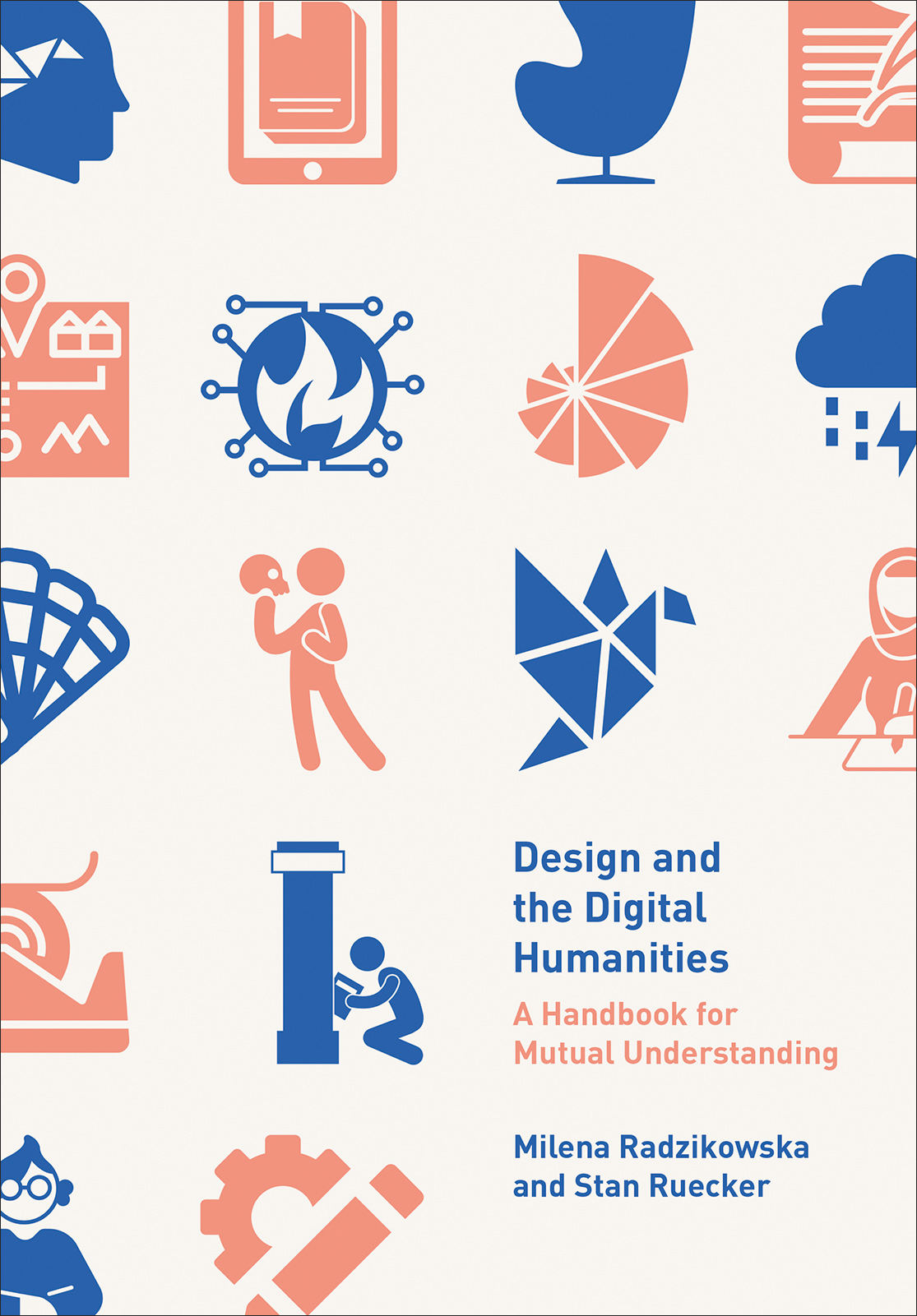
Design and the Digital Humanities
This is an essential practical guide for academics researchers and professionals involved in the digital humanities as well as designers working with them. It prepares readers from both fields for working together outlining disciplinary perspectives and lessons learned from more than twenty years of experience with over two dozen practical exercises.
The central premise of the book is a timely one – that the twin disciplines of visual communication design and digital humanities (DH) are natural allies with much to be gained for researchers students and practitioners from both areas who are able to form alliances with those from the other side. The disciplines share a common fundamental belief in the extraordinary value of interdisciplinarity which in this case means that the training experience and inclinations from both fields naturally tend to coincide. The fields also share an interest in research that focuses on humanities questions and approaches where the goal is to improve understanding through repeated observation and discussion. Both disciplines tend to be generative in nature with the ultimate end in many cases of designing and creating the next generation of systems and tools whether those be intended for dealing with information or communication.
The interdisciplinary nature of this book is both a strength and a challenge. For those academics and practitioners who have worked with the other discipline this will be a much-welcomed handbook of terminology methods and activities. It will also be of interest to those who have read about seen presented and used the outcomes of successful design and DH collaborations and who might be interested in forming similar partnerships.
However for all they have in common design and digital humanities also have significant differences. This book discusses these issues in the context of a variety of research projects as well as classroom activities that have been tried and tested. This book will provide both design and the digital humanities with a better mutual understanding with the practical intention of working effectively together in ways that are productive and satisfying for everyone involved.
Design education has a long history a presence in many post-secondary institutions and a robust market for educational and practice-based literature. The Digital Humanities community in contrast is much younger but rising rapidly both academically and within industry. Both design and DH are collaborative disciplines with much in common in terms of vision but with confusing overlap in terminology and ways-to-practice.
The book describes and demonstrates foundational concepts from both fields with numerous examples as well as projects activities and further readings at the end of each chapter. It provides complete coverage of core design and DH principles complete with illustrated case studies from cutting-edge interdisciplinary research projects. Design and the Digital Humanities offers a unique approach to mastering the fundamental processes concepts and techniques critical to both disciplines.
It will be of interest to those who have been following previous work by bestselling authors in the fields of visual communication design and the digital humanities such as Ellen Lupton Steven Heller Julianne Nyhan Claire Warwick and Melissa Terras.
This guide is suitable for use as an undergraduate or masters-level text or as an in-the-field reference guide. Throughout the book terms or concepts that may not be familiar to all readers are carefully spelled out with examples so that the text is as accessible as possible to non-technical readers from a range of disciplines.

Equality in the City
This collection considers the city of the future and its relationship to its citizens. It responds to the foregrounding of digital technologies in the management of urban spaces and addresses some of the ways in which technologies are changing the places in which we live and the way we live in them.
A broad range of interdisciplinary contributors reflect on the global agenda of smart cities the ruptures in smart discourse and the spaces where we might envisage a more user-friendly and bottom-up version of the smart future. The authors adopt an equality studies lens to assess how we might conceive of a future smart city and what fissures need to be addressed to ensure the smart future is equitable. In the project of envisaging this they consider various approaches and arguments for equality in the imagined future city putting people at the forefront of our discussions rather than technologies.
In the smart discourse hard data technological solutions global and national policy and macro issues tend to dominate. Here the authors include ethnographic evidence rather than rely on the perspective of the smart technologies’ experts so that the arena for meaningful social development of the smart future can develop.
The international contributors respond purposefully to the smart imperative to the disruptive potential of smart technologies in our cities: issues of change design austerity ownership citizenship and equality. The collection examines the pull between equality and engagement in smart futures. To date the topic of smart cities has been approached from the perspective of digital media human geography and information communications technology. This collection however presents a different angle. It seeks to open new discussions about what a smart future could do to bridge divides to look at governmentality in the context of (in)equality in the city. The collection is an approachable discussion of the issues that surround smart digital futures and the imagined digital cities of the future. It is aspirational in that it seeks to imagine a truly egalitarian city of the future and to ponder how that might come about.
Primary readership will be academics and students in social science architecture urban planning government employees and those working or studying in social justice and equality studies
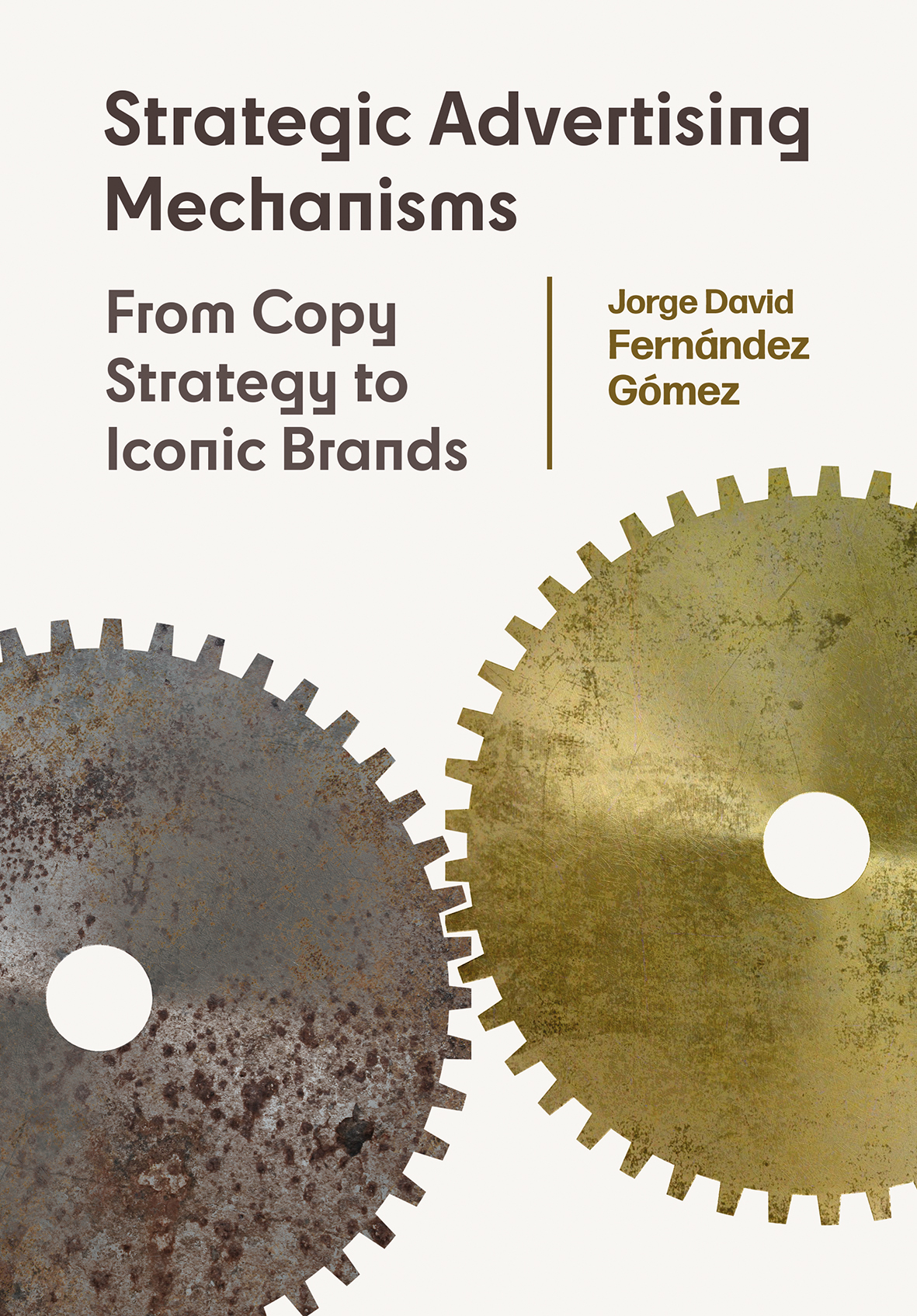
Strategic Advertising Mechanisms
It is the first time that the different strategic advertising mechanisms are explained in a single book. And this is also the first time that a book has brought together the most important and transcendent (for its applicability to the advertising market) strategic advertising mechanisms.
The text explains from classic mechanisms such as Rosser Reeves's USP or Procter & Gamble's copy strategy to modern mechanisms such as Kevin Roberts's Lovemarks or Douglas Holt's iconic brands. It also considers European mechanisms such as Jacques Séguéla’s star strategy or Henri Joannis’s psychological axis. The book has the most complete academic review.
Strategic Advertising Mechanisms: From Copy Strategy to Iconic Brands integrates the most important strategic advertising mechanisms developed throughout the time: USP brand image positioning Lovemarks... This is the first and only book to date that compiles the most consolidated methods by advertisers or advertising agencies (P&G Bates Ogilvy or Euro) in the history of modern advertising.
Primary readership will be among practitioners researchers scholars and students in a range of disciplines including communication advertising business and economic information and communication sociology psychology and humanities. There may also be appeal to the more general reader with an interest in how advertising strategic planning works.

Data Dating
What does it mean to love with technology? Does data improve our emotional interactions? The collection approaches the query with critical essays and works of new media art to look into the construction of love and its practices in the time of digitally mediated relationships. With expertise coming from recognized researchers critics and artists in the field of media and cultural studies it analyses relationship trends and affect cultures that have emerged from technological acceleration.
Data Dating: Love Technology and Desire is a comprehensive study of love and intimacy under digitalism that reflects on the structure of feeling(s) and libido environments in the high-tech and media-bound landscapes of contemporary technocracies. Organized around ten chapters and ten works of new media art the collection offers an extensive critical analysis of technologized romance (and other emotional relations) as well as provides an insight into the codification execution deployment and evolution of the patterns of togetherness in the so-called Tamagotchi era.
The chapters engage in the problems of new material planes that have emerged from the abstraction of networked communication and dispersion of traditional notions of physicality. They close-read the templates of contemporary fantasy fetish and eroticism as shaped by platform capitalism datafication and new commodity cultures in which self-promotion for bonding relies on the new possibilities that are coming in with new media self-mediation formats. Central to the analysis is the carbon-silicon dynamics of love’s contemporary DNA and libidinal techne – practiced in the environment where screens interfaces algorithms data protocols and non-organic objects of affection and affect delineate organize and program the trajectories of encounter limerence and erotic pleasure. All the chapters are authored by recognized researchers in the field of love emotion media technology and cultural studies and they critically explore various aspects of love/intimacy under technocracy approaching them with expertise the goes beyond the typical high-modernist and post-structural reading of the media-ridden life practices and environments.
More importantly the collection includes landmark works of new media art coming from prominent new media artist gathered around 'Data Dating' – new media art exhibition curated by Valentina Peri (co-editor of the collection) and presented in Paris Tel Aviv and London. As such the collection proffers a unique and original critical approach – one that combines artistic practice and cultural criticism – to comment upon the transformation of human relationships and emotional standards under technological development with reference to the social change and cultural condition.
The collection of essays each accompanied by a work of media art that provides a comprehensive insight into the construction of love and its practices in the time of digitally mediated relationships.
Primary readership will be among educators researcher and students in disciplines including cultural studies media and communications philosophy sociology psychology and gender LGBTQ+ and sexual studies. It will be an extremely valuable resource for those in these fields.
It will be of interest to other groups including art curators online platform designers social media content managers and designers and data specialists.
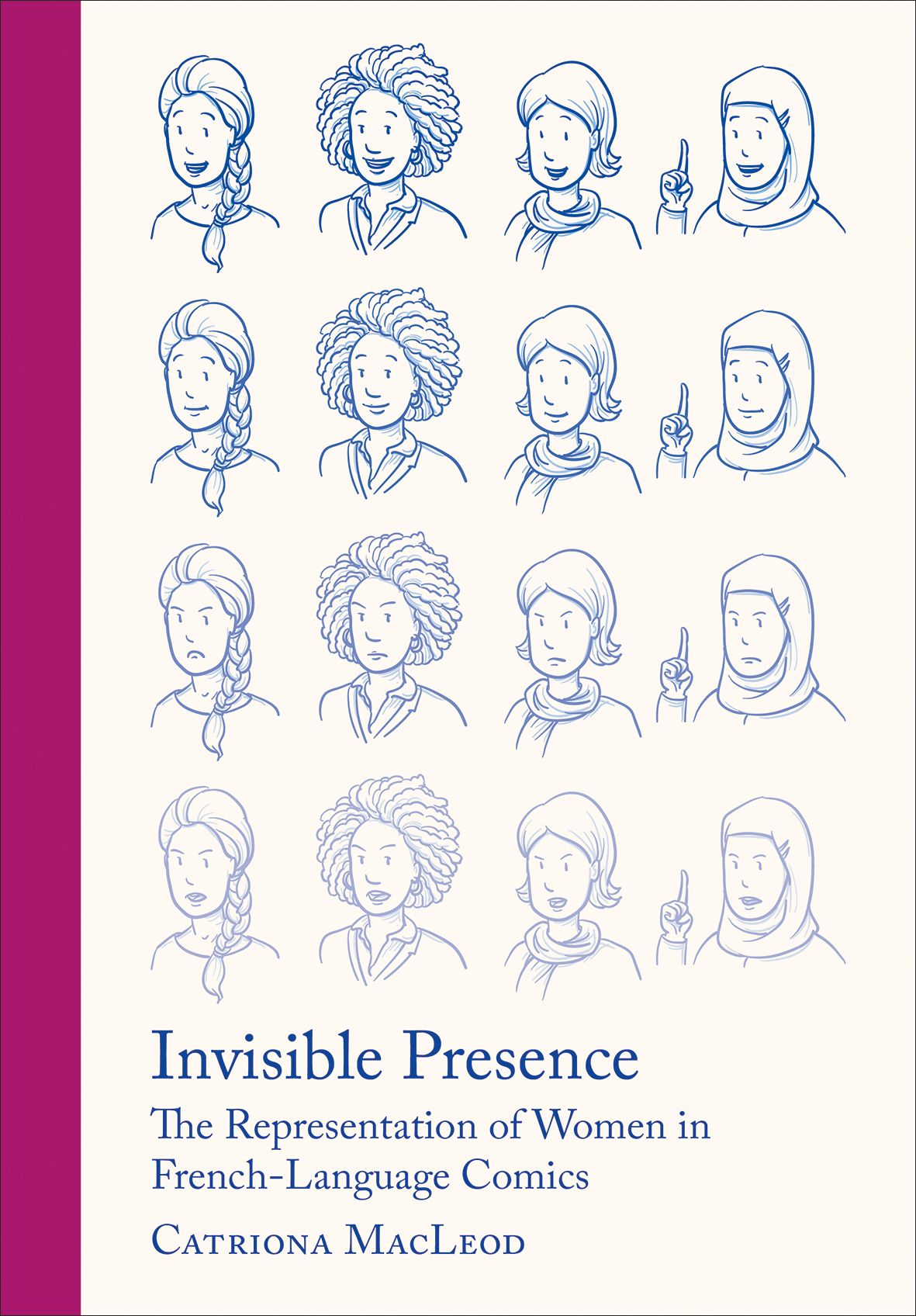
Invisible Presence
This book looks at the representation of female characters in French comics from their first appearance in 1905. Organised into three sections the book looks at the representation of women as main characters created by men as secondary characters created by men and as characters created by women.
It focuses on female characters both primary and secondary in the francophone comic or bande dessinée as well as the work of female bande dessinée creators more generally. Until now these characters and creators have received relatively little scholarly attention; this new book is set to change this status quo.
Using feminist scholarship especially from well-known film and literary theorists the book asks what it means to draw women from within a phallocentric male-dominated paradigm as well as how the particular medium of bande dessinée its form as well as its history has shaped dominant representations of women.
This is the first book to study the representation of women in the French-language drawn strip. There are no other works with this specific focus either on women in Franco-Belgian comics or on the drawn representation of women by men.
This is a very useful addition to both general discussions of French-language comics and to discussions of women’s comics which are focused on comics by women only.
As it is written in English and due to the popularity of comic art in Britain and the United States this book will primarily appeal to an Anglo-American market. However the cultural and gender studies approach this text employs (theoretical frameworks still not widely seen in non-Anglophone studies of the bande dessinée) will ensure that the text is also of interest to a Franco-Belgian audience.
With a focus on an art-form which also inspires a lot of public (non-academic) enthusiasm it will also appeal to fans of the bande dessinée (or wider comic art medium) who are interested in the representation of women in comic art and to comics scholars on a broad scale.
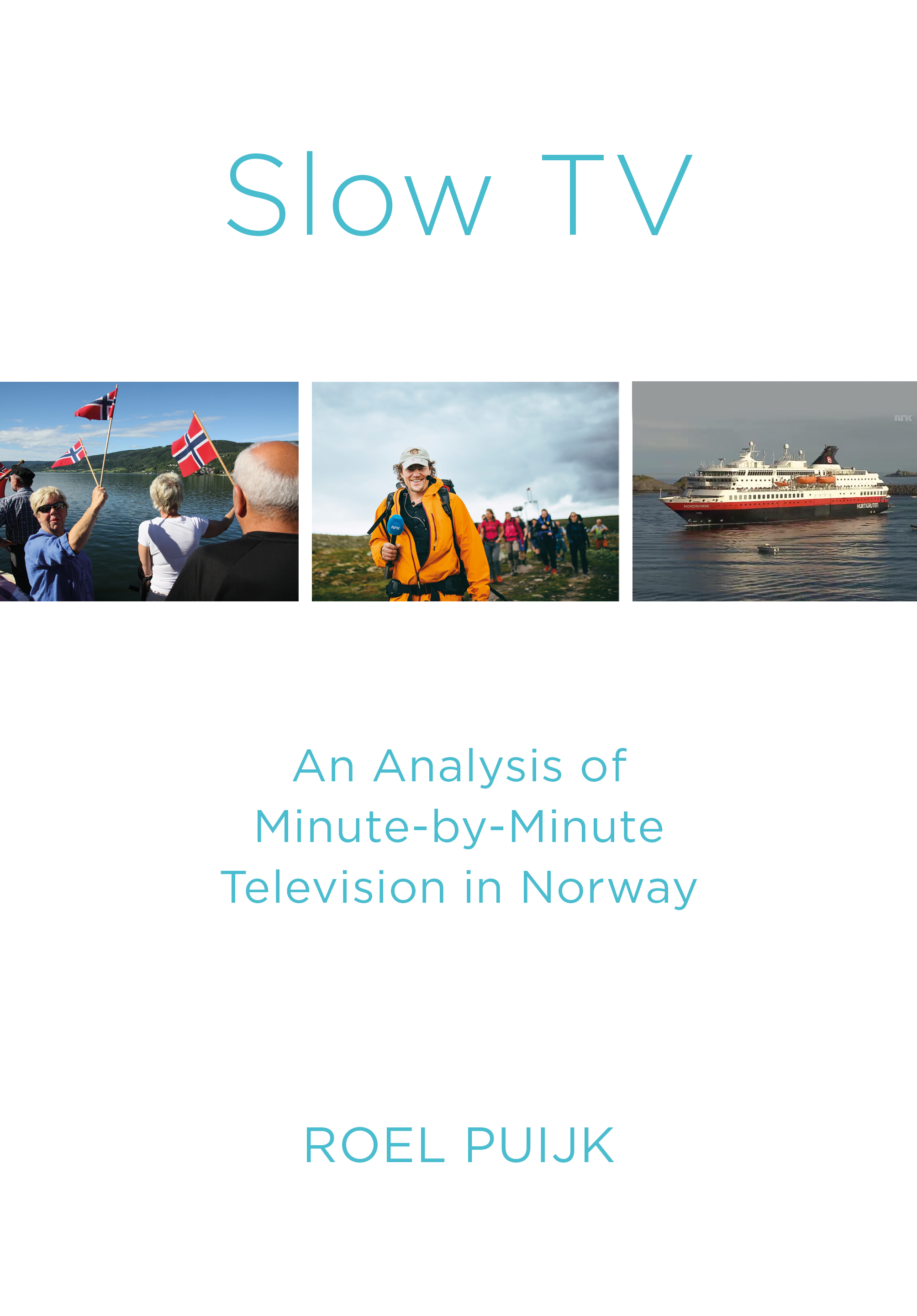
Slow TV
Slow TV has become a familiar feature of broadcasting in Norway. It refers to a set of programmes produced by the Norwegian Broadcasting Corporation (NRK) since 2009 starting out with a seven-hour broadcasting of the train ride between Bergen and Oslo.
The concept of slow TV and ‘minute-by-minute’ broadcasting was developed so that the event on television lasts as long as in real time. Several broadcasters outside Norway including BBC Four YLE SRF and Netflix have now taken up the concept of slow TV.
The first study of this genre this highly original book explores three different aspects of the phenomenon of slow TV: the perspective of the broadcaster the perspective of the producers and other actors involved in the production of the programme and that of the audience.
It goes beyond the question of genre and considers how slow TV fits into television scheduling and how the audience appeal can be understood within broader concepts such as media events media tourism reception and national identity. Public service broadcasters can be seen as having more opportunity to experiment and slow TV can be seen as a good example of public service programming. What attracts viewers to the programmes is that they invite a contemplative mode of watching: there is a chance to see something unexpected or to be introduced to interesting new things.
Illustrated throughout in full colour using stills from broadcast programmes.
This book will appeal primarily to an academic readership both researchers and students. Most readers are likely to be involved with media and communication studies cultural studies and film studies. It will also be of interest more generally to the humanities and social sciences fields as it touches on topics such as national and local identity popular culture Nordic lifestyle well-being tradition community and popular culture.
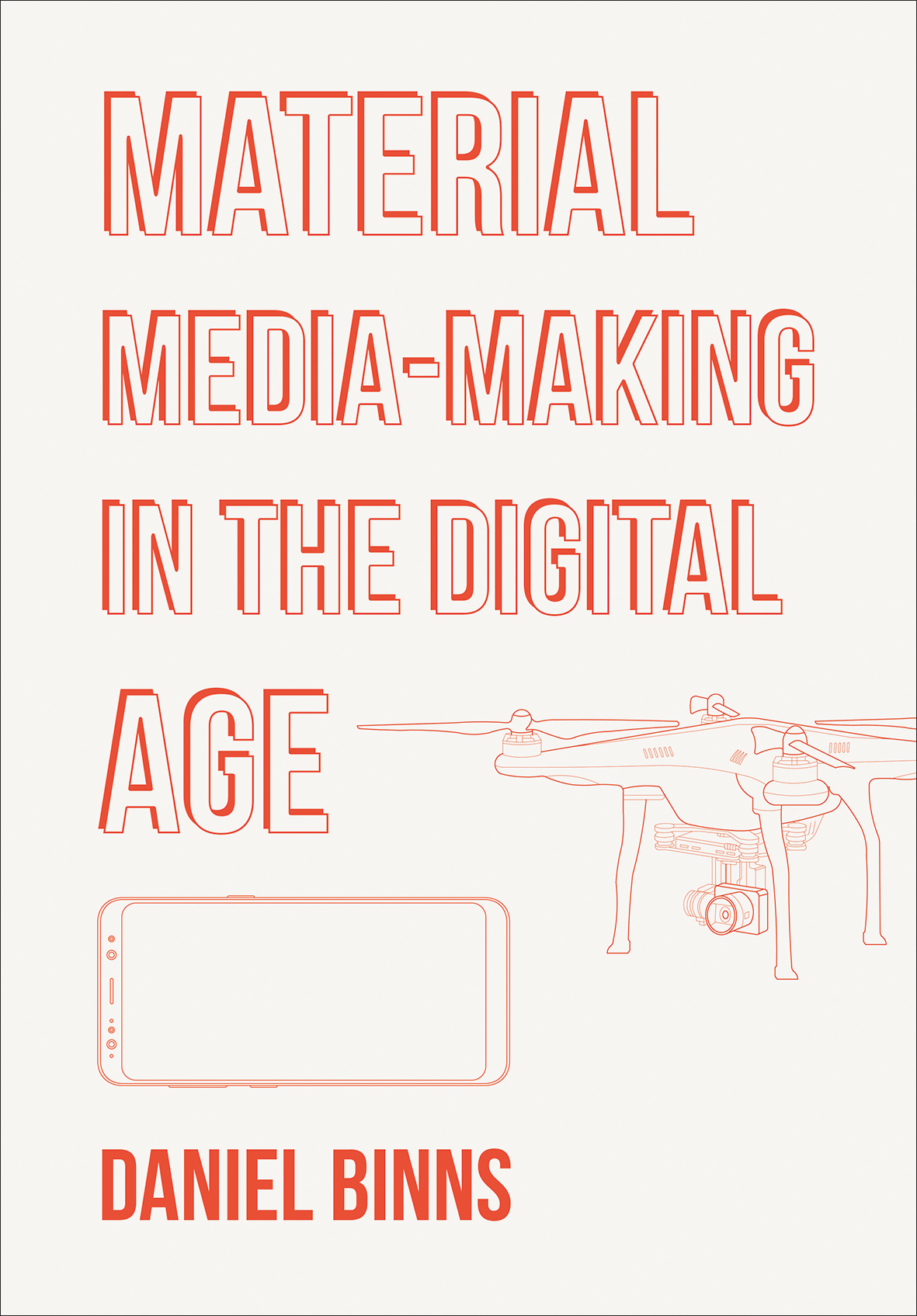
Material Media-Making in the Digital Age
There is now no shortage of media for us to consume from streaming services and video-on-demand to social media and everything else besides. This has changed the way media scholars think about the production and reception of media. Missing from these conversations though is the maker: in particular the maker who has the power to produce media in their pocket.
How might one craft a personal media-making practice that is thoughtful and considerate of the tools and materials at one's disposal? This is the core question of this original new book. Exploring a number of media-making tools and processes like drones and vlogging as well as thinking through time editing sound and the stream Binns looks out over the current media landscape in order to understand his own media practice.
The result is a personal journey through media theory history and technology furnished with practical exercises for teachers students professionals and enthusiasts: a unique combination of theory and practice written in a highly personal and personable style that is engaging and refreshing.
This book will enable readers to understand how a personal creative practice might unlock deeper thinking about media and its place in the world.
The primary readership will be among academics researchers and students in the creative arts as well as practitioners of creative arts including sound designers cinematographers and social media content producers.
Designed for classroom use this will be of particular importance for undergraduate students of film production and may also be of interest to students at MA level particularly on the growing number of courses that specifically offer a blend of theory and practice. The highly accessible writing style may also mean that it can be taken up for high school courses on film and production.
It will also be of interest to academics delivering these courses and to researchers and scholars of new media and digital cinema.
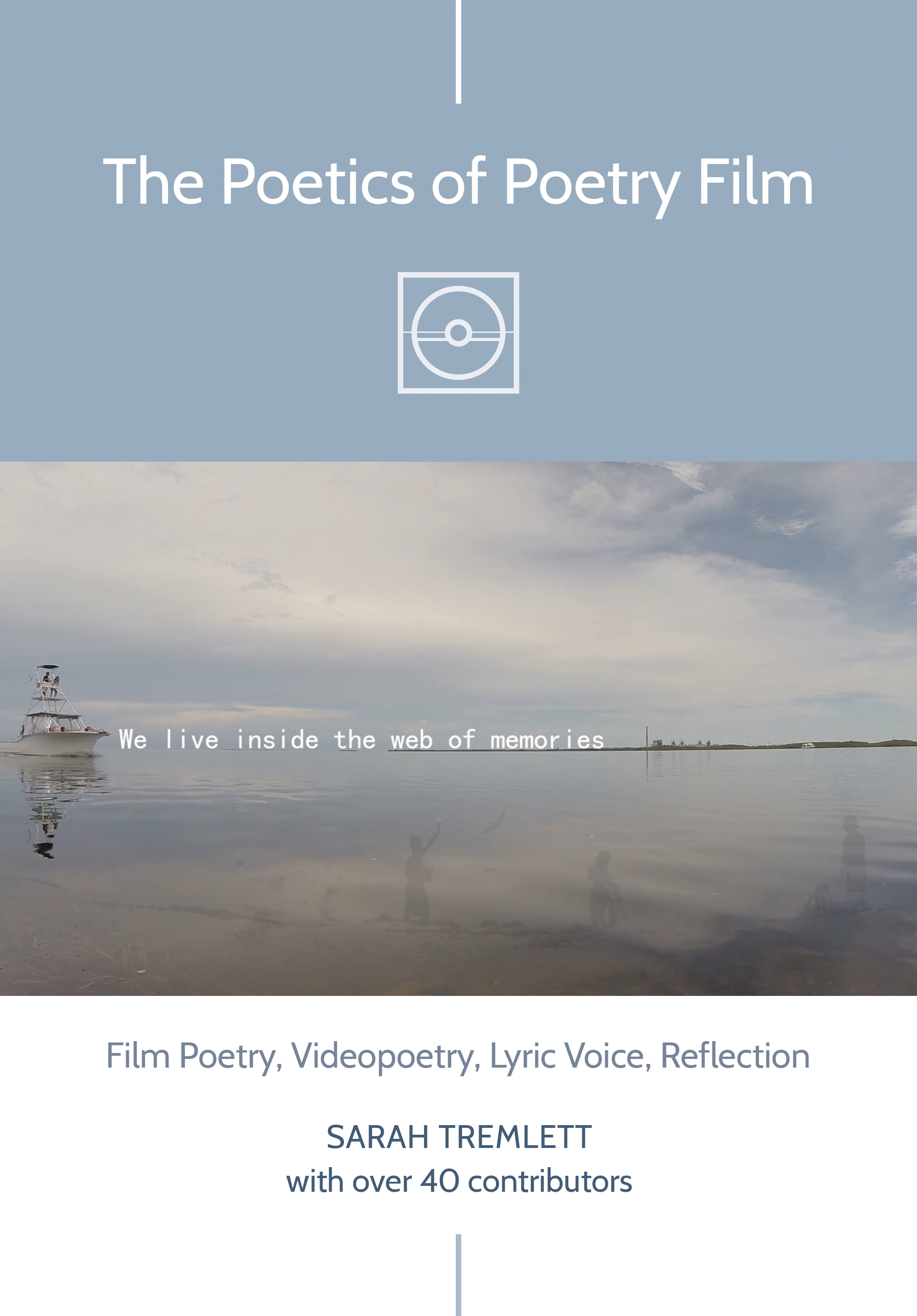
The Poetics of Poetry Film
Set to generate and influence discussions in the field for years to come this is an encyclopaedic work on the ever-evolving genre of poetry film. It will set the benchmark for all subsequent works on the subject being the first book of its kind.
Poetry films are a genre of short film usually combining the three main elements: the poem as verbal message; the moving film image and diegetic sounds; and additional non-diegetic sounds or music which create a soundscape. This book examines the formal characteristics of the poetic in poetry film film poetry and video poetry particularly in relation to lyric voice and time.
Provides an introduction to the emergence and history of poetry film in a global context defining and debating terms both philosophically and materially. Examines the formal characteristics of the poetic in poetry film particularly in relation to lyric voice and time. Includes interviews analysis and a rigorous and thorough investigation of the poetry film from its origins to the present. This is a very important groundbreaking work on film poetry. The ideas discussed here are of great importance and the diversity and breadth of the volume is especially impressive and very useful. This book brings together in one place crucial ideas and information for practitioners students and academics and is clearly and accessibly written.
Including over 40 contributors and showcasing the work of an international array of practitioners this will be an industry bible for anyone interested in poetry digital media filmmaking art and creative writing as well as poetry filmmakers. It explores working practices processes of collaboration and the mechanisms which make these possible. It also reveals the network of festivals disseminating and theorizing poetry film and presents a compelling bibliography.
This is the most incisive and complete analysis of filmic poetry to date. It is poised to become a major text in the field.
Essential reading for academics teaching poetry filmmaking moving image film media and media poetry writing and art. Undergraduate and postgraduate students in those fields. Great potential for textbook adoption.
Also relevant to poets filmmakers visual artists graphic artists and theorists filmmakers screenwriters art historians philosophers cultural commentators arts journalists.
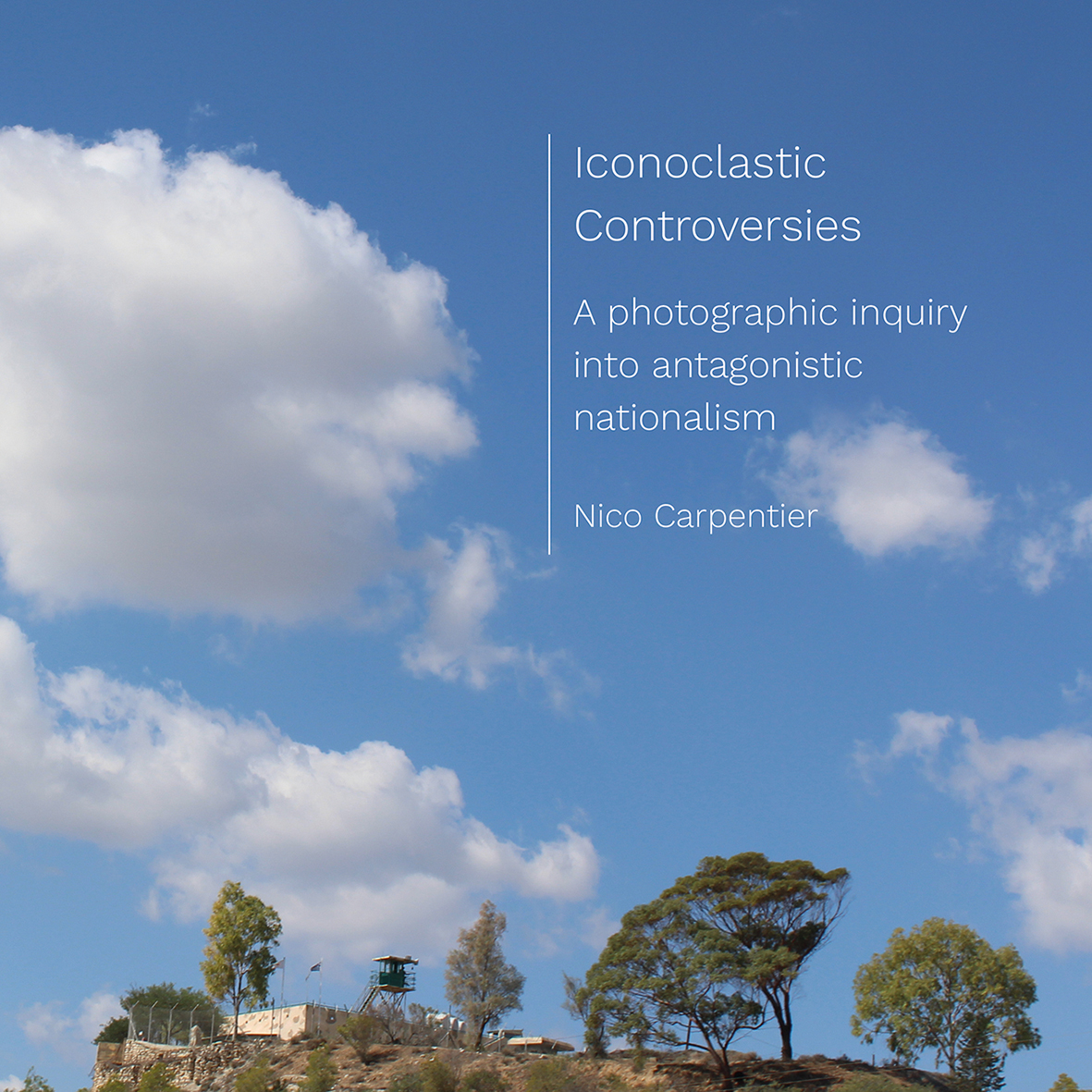
Iconoclastic Controversies
The book combines photography and written text to analyse the role of memorials and commemoration sites in the construction of antagonistic nationalism. Taking Cypriot memorializations as a case study the book shows how these memorials often support but sometimes also undermine the discursive-material assemblage of nationalism.
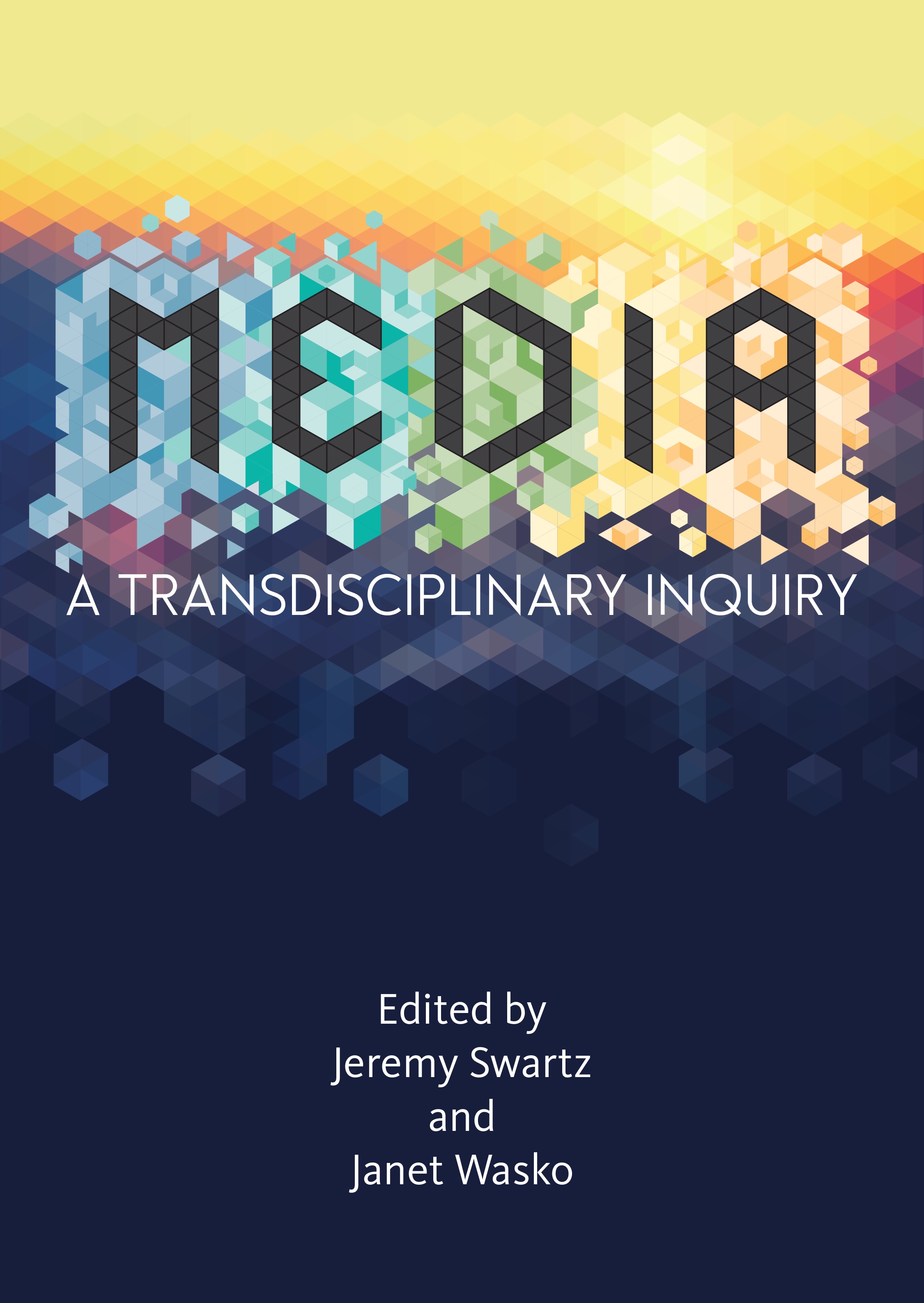
MEDIA
The first in the Media-Life-Universe trilogy this volume explores a transdisciplinary notion of media and technology exploring media as technology with special attention to its material historical and ecological ramifications. The authors reconceptualize media from environmental ecological and systems approaches drawing not only on media and communication studies but also philosophy sociology political science biology art computer science information studies and other disciplines.
Featuring a group of internationally known scholars this collection explores evolving definitions of media and how media technologies are transforming theory and practice. As the current media includes a wider and wider range of concepts products services and institutions the definition of media continues to be in a state of flux. What are media today? How is media studies evolving? How have technologies transformed communication and media theory and informed praxis? What are some of the futures of media?
The collection challenges traditional notions of media as well as concepts such as freedom of expression audience empowerment and participatory media and explores emergent media including transmedia virtual reality online games metatechnology remediation and makerspaces.
The book’s primary readership will be academics scholars and students in media and communication studies including a wide range of undergraduate and graduate courses in media studies communication studies and new media. Suitable for classroom use in the areas of philosophy of communication and media media theory media ecology cultural studies media archaeology feminist studies and political economy of communications and media.

Mediatization(s)
This new collection is the first book to bring together Latin American and European traditions of mediatization research integrating macro level theorization with applied observations of mediatization processes from a multidisciplinary perspective.
In the last decade several European and Latin American researchers have set a very solid theoretical corpus around mediatization. The book brings these two theoretical traditions close together for a dialogue: the Latin American sociosemiotic matrix consolidated by Eliseo Verón in the 1980s and the institutional and constructivist approaches developed in Europe. The main objective of the book is to explore and activate possible theoretical and applied exchanges between these approaches.
This book introduces the main theories and authors on mediatization from Europe and Latin America especially Brazil and Argentina in the last two decades. It historically and epistemologically frames these theories within the context of communication and media theories and pays particular attention to the opportunities generated by the exchanges between European and Latin American approaches. It is edited by scholars from Spain Argentina and the United Kingdom and includes contributors from universities in France Germany Switzerland Brazil Denmark and The Netherlands.
The handbook format including introductory comprehensive sections written by the editors and original texts signed by world leading researchers will make this a useful resource for researchers and students in the field.
The interdisciplinary approach displayed by the book has the potential to make it of interest not only to people working on communication or media studies but also in other disciplines within the humanities and social sciences.
It will be of primary interest to academics scholars researchers undergraduate and postgraduate students particularly a growing population of Latin American postgraduate students in the Global North.
Fields of interest will include communication and media social sciences and social actors linked directly or indirectly to the transformation of the media landscape.

The Legend of Zelda: Ocarina of Time
Some 22 years after its creation The Legend of Zelda: Ocarina of Time is still held in high critical regard as one of the finest examples of the video game medium. The same is true of the game’s music whose superlative reception continues to be evident whether in the context of the game or in orchestral concerts and recordings of the game’s music.
Given music’s well-established significance for the video game form it is no coincidence that music is placed at the forefront of this most lauded and loved of games. In Ocarina of Time music connects and unifies all aspects of the game from the narrative conceit to the interactive mechanics from the characters to the virtual worlds and even into the activity of legions of fans and gamers who play replay and reconfigure the music in an enduring cultural site that has Ocarina of Time at its centre. As video game music studies begins to mature into a coherent field it is now possible to take the theoretical apparatus and critical approaches that have been developed in antecedent scholarship and put these into practice in the context of an extended concrete game example.
The most extensive investigation into the music of a single game yet undertaken this book serves three important primary purposes: first it provides a historical-critical account of the music of an important video game text; second it uses this investigation to explore wider issues in music and media studies (including interactivity fan cultures and music and technology); and third it serves as a model for future in-depth studies of video game music.

The Cultural Impact of RuPaul’s Drag Race
Insightful provocative and now in paperback The Cultural Impact of RuPaul’s Drag Race is a collection of original material that goes beyond simple analysis of the show and examines the profound effect that RuPaul’s Drag Race has had on the cultures that surround it: audience cultures economics branding queer politics and all points in between. Once a cult show marketed primarily to gay men Drag Race has drawn both praise and criticism for its ability to market itself to broader straighter and increasingly younger fans. The show’s depiction of drag as both a celebrated form of entertainment and as a potentially lucrative career path has created an explosion of aspiring queens in unprecedented numbers and had a far-reaching impact on drag as both an art form and a career.
Contributors include scholars based in the United Kingdom the United States Canada and South Africa. The contributions are interdisciplinary as well as international. The editor invited submissions from scholars in theatre and performance studies English literature cultural anthropology media studies linguistics sociology and marketing. What he envisaged was an examination of the wider cultural impacts that RuPaul’s Drag Race has had; what he received was a rich and diverse engagement with the question of how Drag Race has affected local live cultures fan cultures queer representation and the very fabric of drag as an art form in popular cultural consciousness.
This original collection with its variety of topics and approaches is a critical appraisal of RuPaul’s Drag Race at an important point of the programme’s run as well as of the growing industries around RPDR including DragCon and drag queens' post-show careers in the on- and offline world.
Primarily of interest to students scholars and researchers in media and communication studies gender and sexuality studies popular culture queer theory LGBTQ history media studies and fan studies. Will also appeal to fans of the series.

Language of Tomorrow
This book gives an overview of the development of the evolution of language through a philosophical lens and is a culmination of research combining visual communication semiotic theory cultural studies linguistics artificial intelligence and new media.
It discusses the future of communication – through a pictographic framework – and the possibility of developing a standardized universal pictographic communication system that fosters mutual understanding and bridges diverse cultures. The research aims to locate the direction that research and development of a universal language for the posthuman era could take through the contextualization and realization of associated practice.
Highly relevant in today's discussion about globalization language and culture the combination of the view of design philosophy culture and technology makes this book unique.
Postgraduate students of design art philosophy and researchers and academics in the fields. Scholars and students working in linguistics. Cultural studies. Theory of art and design. Artificial intelligence (AI) and art-tech.

Lesbians on Television
The twenty-first century has seen LGBTQ+ rights emerge at the forefront of public discourse and national politics in ways that would once have been hard to imagine. This book offers a unique and layered account of the complex dynamics in the modern moment of social change drawing together critical social and cultural theory as well as empirical research which includes interviews and multi-platform media analyses.
This original new study puts forward a much-needed analysis of twenty-first century television and lesbian visibility. Books addressing the representation of lesbians have tended to focus on film; analysis of queer characters on television has usually focused on representations of gay males. Other recent books have attempted to address lesbian gay and trans representation together with the result that none are examined in sufficient detail – here the exclusive focus on lesbian representation allows a fuller discussion. Until now much of the research on lesbian and gay representation has tended to employ only textual analysis. The combination of audience research with analysis in this book brings a new angle to the debates as does the critical review of the tropes of lesbian representation. The earlier stereotypes of pathological monsters and predators are discussed alongside the more recent trends of ‘lesbian chic’ and ‘lesbianism as a phase’.
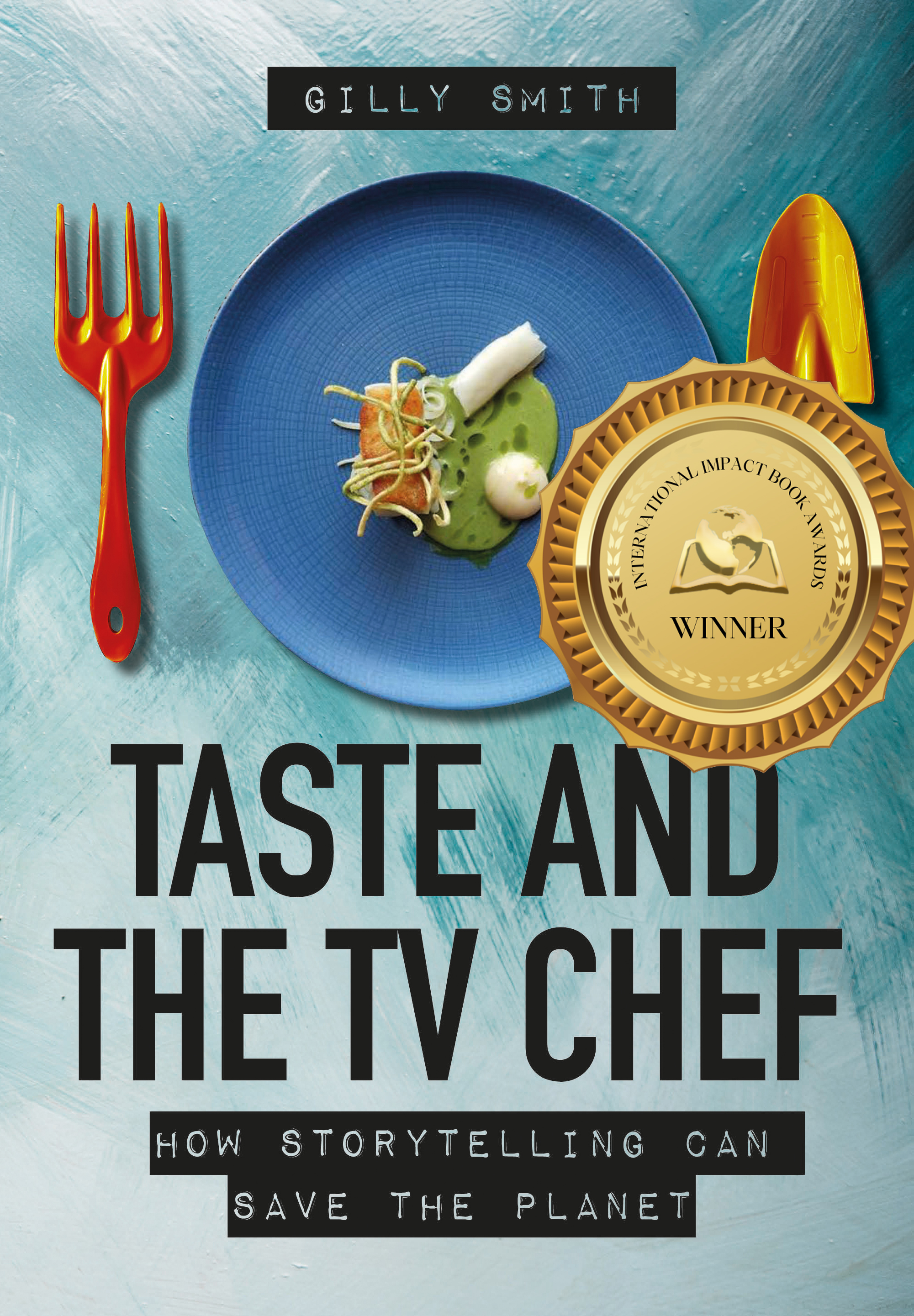
Taste and the TV Chef
Food journalist podcast producer and former academic Gilly Smith offers fresh insights into the creation of contemporary British food culture. Her latest book explores the story of modern food culture with the creators of lifestyle and food TV and with the academics carving a new world in food and media studies. Taste and the TV Chef investigates how television changed the way Britain eats and sold it to the world.
While cooking shows are far from new they have exploded in popularity in recent years and changed consumption patterns at a time when what we eat has an enormous impact on climate change.
What was once merely a genre is now a full-blown phenomenon: never before has food been so photographed fawned over fetishized and celebrated as various answers to saving the planet. Celebrity chefs and so-called ‘foodies’ have risen to new levels of fame and the cultural capital of cooking has never been so valuable.
Looks at the influence of chefs like Jamie Oliver Nigella Lawson and Gordon Ramsay and the role of TV storytelling in transforming how and what we consume. A ground-breaking contribution to food and media studies which includes rare interviews with the producers who created some of the most influential stories television ever told Taste and the TV Chef investigates how food and lifestyle TV changed the way an entire country ate and then fed it to the rest of the world.
Main academic readership will be scholars researchers and students in cultural studies media studies. Also practitioners and students in the fields of TV production and writing.
Will also appeal to anyone with an interest in the development of food TV and the rise of the TV chef.

The Media-Democracy Paradox in Ghana
This original new book researches into the praxis of this democracy and its media delving into Ghana’s evolvement media practice leadership aspirations pressure group politics and ethnic and tribal cleavages. Written in accessible language it will provide valuable source material for readers interested in the development of a democratic culture.
A rich data source for students scholars and researchers on both the African continent and in the diaspora it examines the growing influence of social media in political discourse and provides an insightful analysis on debates surrounding political communication and its implications for strengthening democratic culture. Its intention is to challenge the intellectual rigour of scholars academics researchers and students. The analytical frames it offers are to generate intellectual discourses.
Provides an overview of the history of the press in Ghana and how that has shaped the current media landscape and draws attention to the growing influence of social media in political messages and debate. The historical analysis of the political situation of Ghana and its relationship to the press is informative comprehensive and stimulating to read. Ideas discussed are revealing and relevant to current discussions on the contributions of the media to the growth and development of democracy in Ghana in particular – and in Africa as a whole.
The unusual and highly original comparative analytic approach used here is in dealing with the media-democracy paradox through comments and analysis that challenges the orthodoxy of western idealism. The discussion of media and democracy with private and state media operating side-by-side in a multiparty democratic setting regulated by a constitution adds significantly to the wider field of knowledge on the media and democracy.
Primary audience will be academics scholars researchers and students – undergraduate and postgraduate – in the humanities and social sciences. Of particular relevance to those in media and communication studies political science journalism cultural studies postcolonial studies and historians whose research interests include Ghana. Also relevant to those with an interest in democracy and development to media advocacy institutions and policy makers and to media development experts.
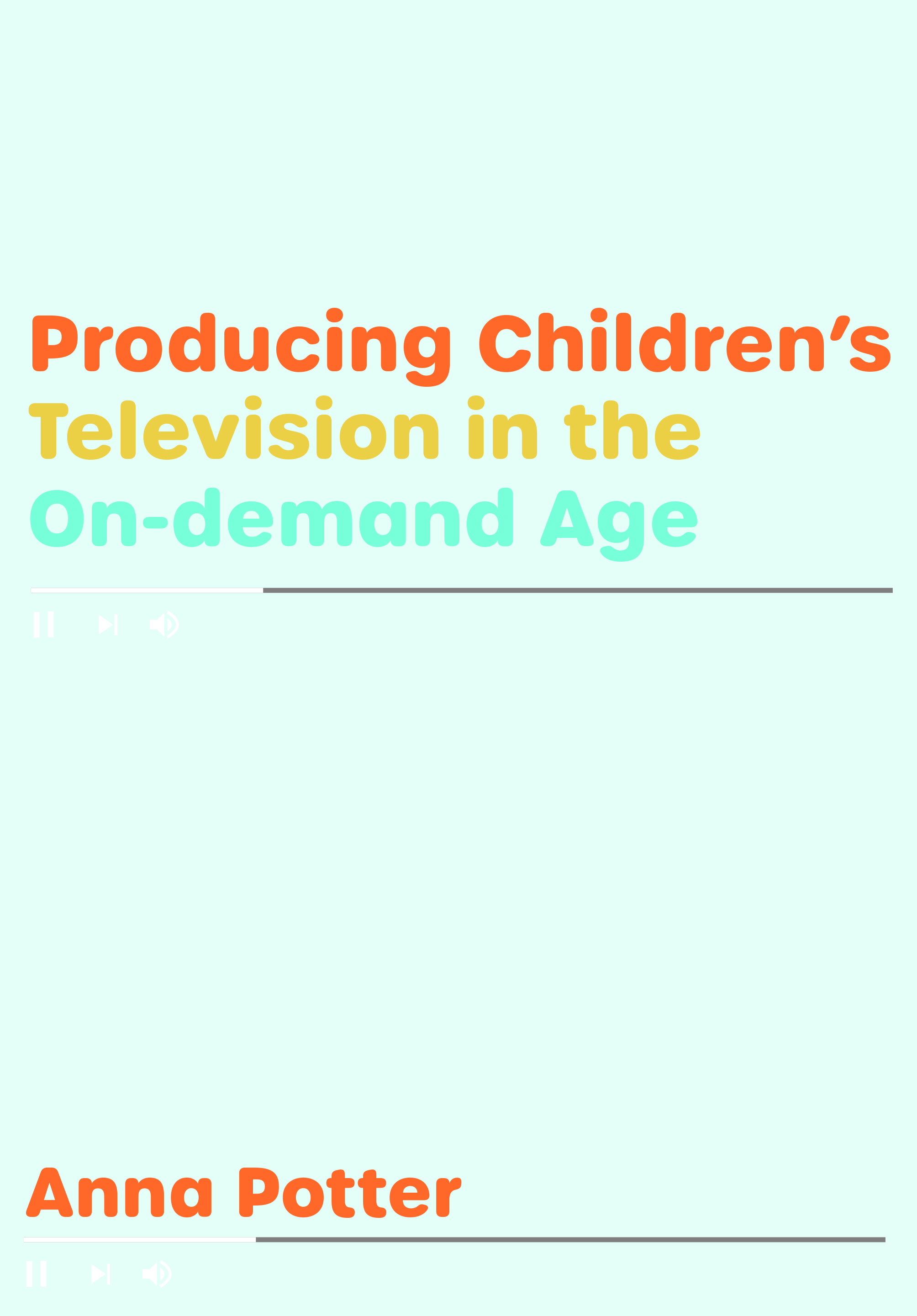
Producing Children’s Television in the On Demand Age
This book provides a detailed account of the creative economic and regulatory processes underlying the production of children’s television in a multi-platform era. Its collection of integrated case studies includes extended interviews with leading producers whose programs are watched by children all over the world. These reveal the impact of digitization on the funding distribution and consumption of children’s television and the ways that producers have adapted their creative practice accordingly. In its comprehensive analysis of the production culture of children’s television this book provides a valuable lens through which to view broader transformations in media industries in the on-demand age.
This original and engaging book explores the creative processes underlying the production of children’s television with close attention to underlying economic and policy dynamics. It does so through a combination of detailed case studies and interviews with leading producers from across three English-language markets. In its examination of the impact of new streaming services like Netflix and Amazon Prime on the funding production and distribution of children’s screen content the book will reveal how producers successfully created content for these increasingly influential new services.
It offers important insights into the production of children’s screen content in Australia New Zealand and the United Kingdom and builds on previous research in the field. The addition of analysis which provides the context of historical regulatory and economic factors that shape production in all three countries is important for situating the personal testimonies and providing some critical distance. The variety of productions chosen for analysis including drama factual productions and animation represents the very different pressures on different genres. Previous studies have looked at children’s content as one genre whereas this new study reveals children’s content to be as diverse in range as adult content.
The case studies show the pressures and opportunities emerging from different national and international context and offers its own unique take on matters such as diversity gender representation and indeed the ethics of representing children from a producers’ perspective. As a contribution to industry studies this volume represents a valuable addition to the literature and will no doubt be referenced by future studies.
The quantity and quality of original interview material goes far beyond interviews in the trade press. Combined with the rich detail of production case studies the articulate interviews and Potter’s highly engaging mode of writing this book is an invaluable additional to research in the area.
This book will provide a crucial analysis of success stories in the children’s screen production industries at a time of flux and adaptation as television’s distribution revolution takes place.
The book will be indispensable for scholars of children’s television and of UK New Zealand and Australian media policy. It will also engage a wider audience interested in television production production studies and digital distribution – including those teaching at undergraduate and postgraduate levels. It will be a valuable library resource for courses that include screen media industries and television production culture as part of their content. It will be of interest to scholars beyond children’s television because of its analysis of success stories in screen production at a time of change and uncertainty.
It will also be of relevance to the international screen production sector and industry bodies including screen organizations such as Screen Australia and the UK’s Children’s Media Foundation for its analysis of success stories in the screen production industries. Also of interest to the many groups with vested interests around children and children’s media – including regulatory bodies like Ofcom in the UK the Australian Communications and Media Authority in Australia and other key institutions including legacy broadcasters such as the BBC ABC and ITV.
